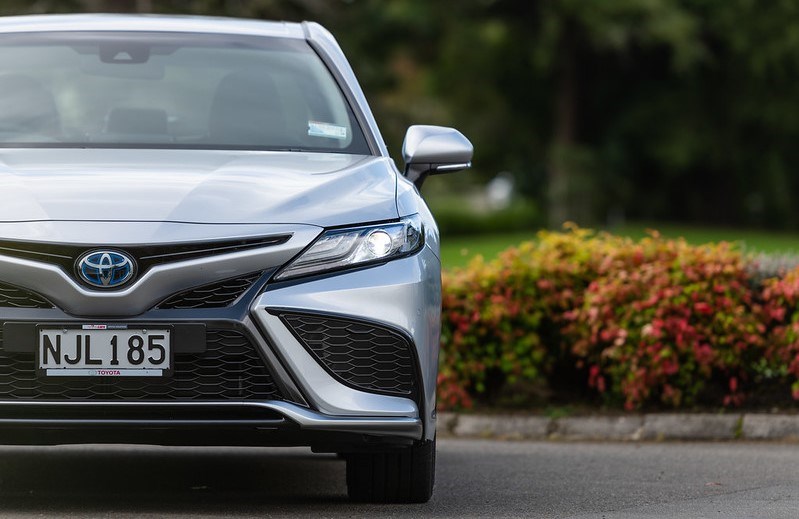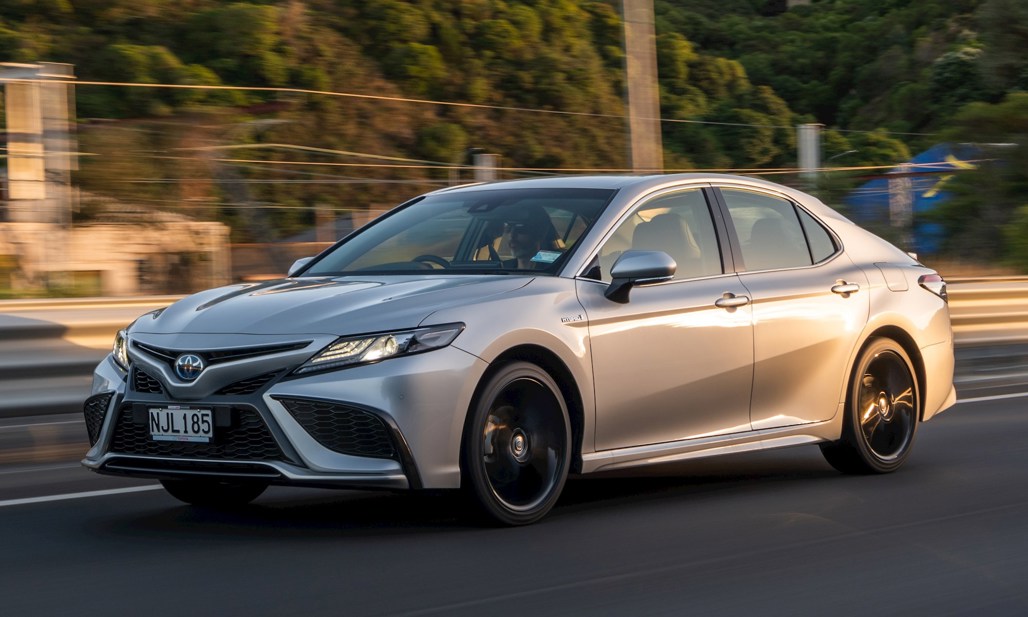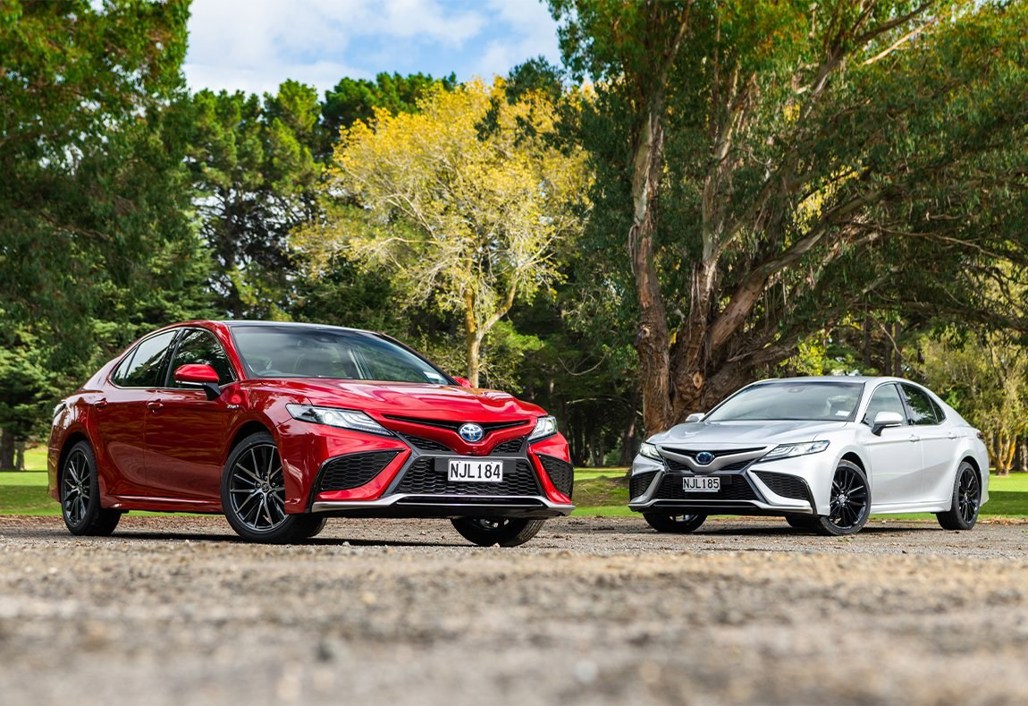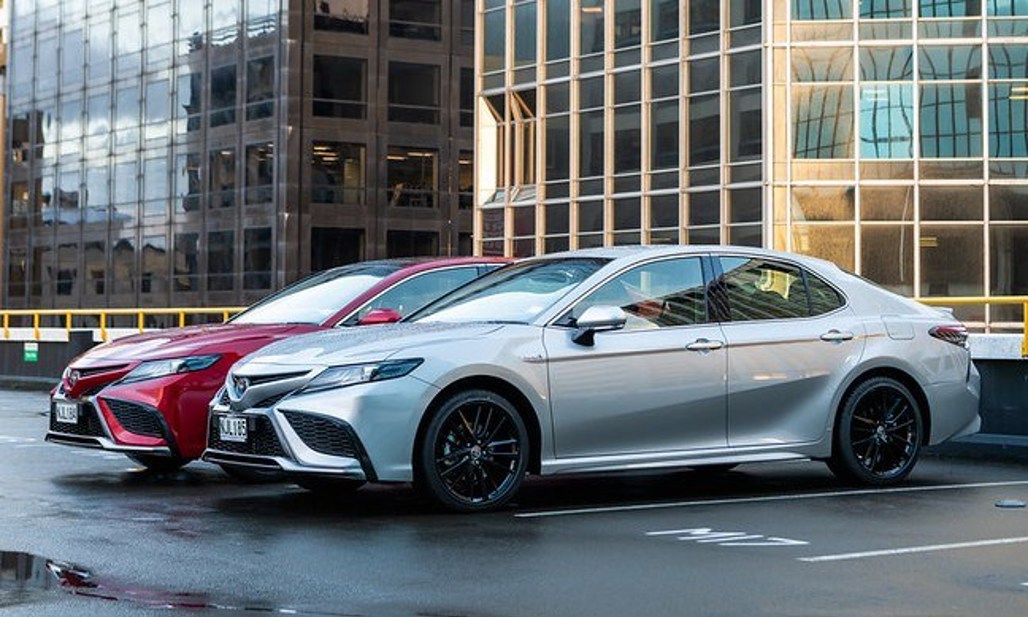Fun fact: several of Toyota’s core model names are derivations of “crown”. There’s the Japanese-market, um, Crown luxury sedan. Corolla is Latin for “little crown” (you can see what they did there) and Camry comes from the Japanese word kanmuri, which means… crown.
You could call that ironic badging in 2021, because it’s been a while since Camry ruled anything in New Zealand. But maybe not as long as you think.

We all know traditional sedans have been in decline for a long time. In fact, the last time Camry cracked the top 15 in the NZ new-vehicle sales charts was 2013.
Without getting too bogged down in stats, back then 1352 examples were sold. Compare that with an annualised figure of 400 for 2021 – still good enough for well over 30 per cent of a Medium passenger car segment that accounts for just 0.6 per cent of total new-vehicle sales. You can see the shrinkage everywhere.
But did you know that the Camry was also NZ’s top-selling electrified vehicle as recently in 2018? By miles actually. It outsold every hybrid, PHEV and BEV on the market, although the game changed with the launch of the RAV4 hybrid in 2019.
To see all Toyota Camry models listed on DRIVEN, click here
So it makes sense that the facelifted Camry is now available solely as a hybrid. There’s nothing revolutionary on offer, with the petrol-electric powertrain driving the front wheels through a Continuously Variable Transmission (CVT). It’s not a plug-in, but energy is recovered during coasting, deceleration and braking to top up the modest 1.0kWh battery – a system Toyota mischievously calls “self charging”.
The battery can provide zero-emissions running for very short distances in traffic, and assistance to the petrol engine when required.
It’s all very familiar. That hybrid battery is now lithium-ion though, a change Toyota made with Camry from the old nickel-metal hydride packs back in 2018.
There are tweaks on the outside and a big new tablet-style screen on the inside, with Apple CarPlay and Android Auto now integrated.
With the demise of the conventional petrol engines (including the rather wild 3.5-litre V6), we’re down to three variants, all with the same hybrid setup. There’s a fleet-focused GX (do fleets still buy Camrys?), a sports-themed SX (below right) and the luxury ZR (below left).

In truth, there’s not a lot between them. We spent our time (a lot of time, it’s lockdown after all) in the SX, which has a bit more black on the outside and a bit more stiffness in the suspension, although it’s still very driveable as an everyday car. Because it’s still a Camry.
To view all Toyota hybrid models listed on DRIVEN, click here
Spend the extra $4k on the ZR and you get a more traditional look, but also extra kit such as hearted/vented front seats (memory for driver), head-up display, different trim inserts, a more powerful JBL sound system and panoramic sunroof.
After more than two decades, Toyota has this hybrid thing down pretty well. The Camry powertrain is seamless in urban driving and adept at rolling along on battery power only whenever possible. The maximum on a full charge is realistically only a few hundred metres and the slightest increase in throttle fires up the petrol engine, but the battery tops up very quickly as you coast or brake in traffic, which means you can be in EV Mode (there’s a button for that, although the powertrain can manage itself) a surprising amount of the time.

That’s why this full-size sedan can average 4.7 litres per 100km in official tests and 5.5l/100km for our extended time with the SX test vehicle, which included a lot of urban driving.
To view all Toyota sedan models listed on DRIVEN, click here
CVT is seldom a keen driver’s friend, but overall the Camry’s dynamic package is impressive. It’s composed around corners and there’s something very pleasing about being closer to the ground in this SUV age.
That low ride height will still be a shock to the system for many new-vehicle buyers these days, but the 4.9m-long Camry remains a spacious family vehicle. A sedan it may be, but there’s a lot of storage space up front, including a cavernous centre-console bin and a nifty sliding tray at the base of the centre console with another little bin underneath.

Rear-seat space is vast, with limo-like levels of legroom – even if the roofline creates a bit of cave in comparison with say, a RAV4. Two USB ports for charging in the back will keep the junior-executives happy.
The Camry’s battery is tucked under the rear seats, so the boot remains a generous 524 litres – not too far off a RAV4’s 580l, although access and height isn’t as good of course.
So it’s surprising relevant and practical in 2021 terms, but still - why would you buy a Camry over a family SUV? Well, it’s an astonishingly well-rounded, polished package and – here’s something I bet you never thought you’d hear – in the modern motoring world, a Camry is just a bit different.
TOYOTA CAMRY HYBRID
ENGINE: 2.5-litre petrol with lithium-ion battery and hybrid system
POWER: 160kW (total system)/221Nm
GEARBOX: Continuously variable automatic, FWD
ECONOMY: 4.7l/100km, 107g/km
PRICE RANGE: $42,790-$51,290











